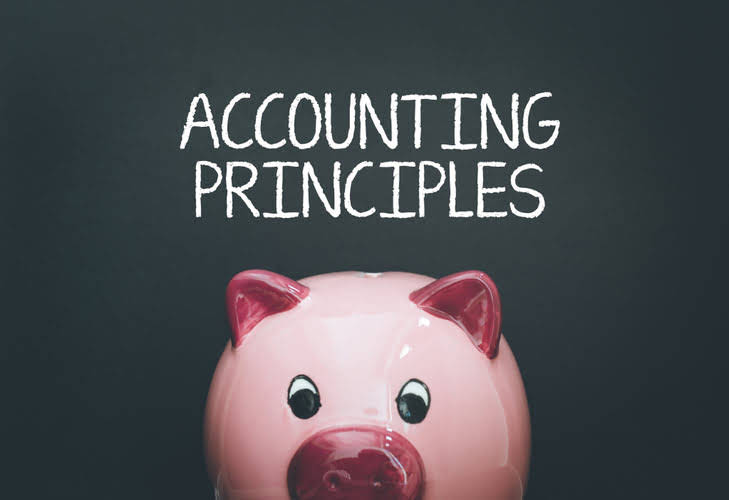If the software meets the tests above, it may also qualify for the section 179 deduction and the special depreciation allowance, discussed later in chapters 2 and 3. If you can depreciate the cost of computer software, use the straight line method over a useful life of 36 months. In April, you bought a patent for $5,100 that is not a section 197 intangible. You depreciate the patent under the straight line method, using a 17-year useful life and no salvage value.
- This method is good for businesses that want to write off equipment with a quantifiable and widely accepted (i.e., based on the manufacturer’s specifications) output during its useful life.
- You figured this by first subtracting the first year’s depreciation ($2,144) and the casualty loss ($3,000) from the unadjusted basis of $15,000.
- This reduction of basis must be made even if a partner cannot deduct all or part of the section 179 deduction allocated to that partner by the partnership because of the limits.
- Instead of including these amounts in the adjusted basis of the property, you can deduct the costs in the tax year that they are paid.
- It also discusses the rules for determining depreciation when you have a short tax year during the recovery period (other than the year the property is placed in service or disposed of).
CoCounsel: The GenAI for tax and accounting professionals
Julie paid rent of $3,600 for 2022, of which $3,240 is deductible. The $147 is the sum of Amount A and Amount B. Amount A is $147 ($10,000 × 70% (0.70) × 2.1% (0.021)), the product of the FMV, the average business use for 2022 and 2023, and the applicable percentage for year 1 from Table A-19. For other listed property, allocate the property’s use on the basis of the most appropriate unit of time the property is actually used (rather than merely being available for use). To figure depreciation examples of depreciable assets on passenger automobiles in a GAA, apply the deduction limits discussed in chapter 5 under Do the Passenger Automobile Limits Apply. Multiply the amount determined using these limits by the number of automobiles originally included in the account, reduced by the total number of automobiles removed from the GAA, as discussed under Terminating GAA Treatment, later. Special rules apply to figuring depreciation for property in a GAA for which the use changes during the tax year.
Credits & Deductions

It discusses depreciation and provides depreciation examples in many sections of the book, unlike the Accounting for Dummies manual (affiliate link). Links to the separate sections of this tutorial are listed above. However, I recommend reading the tutorial from start to finish.
- They also made an election under section 168(k)(7) not to deduct the special depreciation allowance for 7-year property placed in service in 2022.
- Tara does not elect to claim a section 179 deduction and the property does not qualify for a special depreciation allowance.
- And, the depreciation charges still reduce a company’s earnings, which is helpful for tax purposes.
- Larry’s inclusion amount is $224, which is the sum of −$238 (Amount A) and $462 (Amount B).
- The basis of all the depreciable real property owned by the cooperative housing corporation is the smaller of the following amounts.
- The OPI Service is a federally funded program and is available at Taxpayer Assistance Centers (TACs), most IRS offices, and every VITA/TCE tax return site.
Depreciation
- You place property in service when it is ready and available for a specific use, whether in a business activity, an income-producing activity, a tax-exempt activity, or a personal activity.
- It is often not an either/or decision in terms of acquiring the right to use an asset.
- You can elect, for any class of property, not to deduct any special depreciation allowances for all property in such class placed in service during the tax year.
- In chapter 1 for examples illustrating when property is placed in service.
- The cost of business assets can be expensed each year over the life of the asset to accurately reflect its use.
- Depreciation recapture can be quite costly when selling something like real estate.
If you’re confused about whether you should depreciate an asset or not, look for these five common characteristics of depreciable assets. I made the following infographic to give you some https://www.bookstime.com/articles/debit-memo in a small business. This is a simple way to depreciate the value of an asset based on how frequently the asset is used. “Units of production” can refer to something the equipment makes — like the number of pizzas that can be made in a pizza oven, or the number of hours that it’s in use. This method is good for businesses that want to write off equipment with a quantifiable and widely accepted (i.e., based on the manufacturer’s specifications) output during its useful life.
Options of Methods
The double-declining balance method is advantageous because it can help offset increased maintenance costs as an asset ages; it can also maximize tax deductions by allowing higher depreciation expenses in the early years. In May 2017, you bought and placed in service a car costing $31,500. You did not elect a section 179 deduction and elected not to claim any special depreciation allowance for the 5-year property. You used the car exclusively for business during the recovery period (2017 through 2022). On August 1, 2022, Julie Rule, a calendar year taxpayer, leased and placed in service an item of listed property. Julie’s business use of the property was 50% in 2022 and 90% in 2023.


Some assets, if no longer needed, can be sold at the end of their depreciable life spans. If an asset is marketable at the end of its lifespan, its expected selling price is called its salvage value, or residual value. It’s important for investors or potential investors to examine all aspects of your business. Tracking depreciation allows investors to view asset usage and also gives them a heads-up when the life of an asset is close to ending. Recording depreciation will affect both your income statement and your balance sheet.
What is the difference between depreciation and amortization?
If you use the standard mileage rate to figure your tax deduction for your business automobile, you are treated as having made an election to exclude the automobile from MACRS. Instead of including these amounts in the adjusted basis of the property, you can deduct the costs in the tax year that they are paid. You must also increase the 15-year safe harbor amortization period to a 25-year period for certain intangibles related to benefits arising from the provision, production, or improvement of real property. For this purpose, real property includes property that will remain attached to the real property for an indefinite period of time, such as roads, bridges, tunnels, pavements, and pollution control facilities. You stop depreciating property when you have fully recovered your cost or other basis. You fully recover your basis when your section 179 deduction, allowed or allowable depreciation deductions, and salvage value, if applicable, equal the cost or investment in the property.
Assume the same facts as in Example 1, except that you maintain adequate records during the first week of every month showing that 75% of your use of the automobile is for business. Your business invoices show that your business continued at the same rate during the later weeks of each month so that your weekly records are representative of the automobile’s business use throughout the month. The determination that your business/investment use of the automobile for the tax year is 75% rests on sufficient supporting evidence. Written documents of your expenditure or use are generally better evidence than oral statements alone. A special rule for the inclusion amount applies if the lease term is less than 1 year and you do not use the property predominantly (more than 50%) for qualified business use.
- This means that there will be a large difference between tax expense and taxable income at the beginning of the accounting period.
- Enter that amount on line 10 of your Form 4562 for the next year.
- The price that property brings when it is offered for sale by one who is willing but not obligated to sell, and is bought by one who is willing or desires to buy but is not compelled to do so.
- Amortization is recorded to allocate costs over a specific period.
- It also includes plumbing fixtures such as sinks, bathtubs, electrical wiring and lighting fixtures, and other parts that form the structure.
